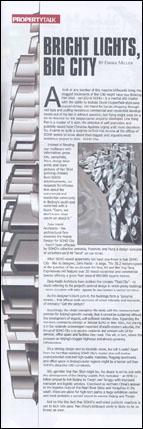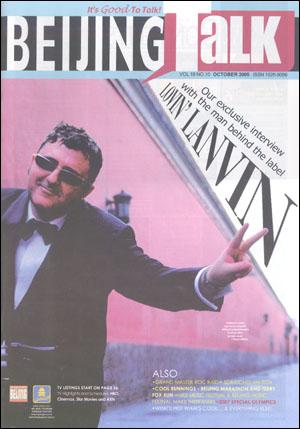

A look at any number of the massive billboards lining the clogged boulevards of the CBD might have you thinking Pan Shiyi co-CEO of SOHO is a martial arts master with the ability to levitate David Copperfield-style sans puppet-strings. His talent for karate chopping through red tape and pulling monstrous commercial and residential developments out of his hat is without question, but flying might even be a bit far-fetched for the bespectacled property developer. One thing Pan is a master of is spin. His embrace of self-promotion and publicity would have Christina Aguilera urging a bit more discretion. So, it came as quite a surprise to find that no-one at the offices of SOHO seems to know about their biggest and arguably most ambitious project to date SOHO City.
Instead of flooding our mailboxes with information, press kits, pamphlets, fliers, design blueprints and more pictures of Pan Shiyi grinning cheesily from SOHO advertisements, our requests for information about the commercial and residential community in Beijing s south-east were met with a blunt, Sorry, we don t know what you re on about it.
Zaha Hadid Architects the architectural firm awarded the Master Design for SOHO City hasn t been affected by SOHO s collective amnesia, however, and flung a design synopsis at us before we d hit send on our email.
What SOHO would apparently not have you know is that SOHO City like its designer. Zaha Hadid is large. The 35.2 hectare space at the junction of the south-east 4th Ring and the Jing Tang Expressway will feature over 30 mixed residential and commercial towers offering a gross floor area of 800 000 square metres.
Zaha Hadid Architects have dubbed the complex Fluid City no doubt referring to the project s seminal design in which pointy buildings some complete with tails appear to race toward a central terminus.
As the designer s blurb puts it, the buildings form a dynamic swarm...that affords both moments of urban intensity and moments of intimacy. Get the picture?
Accordingly, the whole conception fits nicely with the commonly-held premise for Beijing s growth; namely, that it cannot be sustained without the development of organic, self-sufficient satellite cities. Expanding the live-work community concept of Jianwai SOHO or New Town, but placing it in the relatively undeveloped expanses of south-western suburbia, the thrust of SOHO City is to provide residents and workers with all the services, office space and facilities they need. This will, in turn, relieve the pressure on Beijing s clogged highways and already-groaning infrastructure.
It s striking design and an idealistic vision, but will it work? Apart from the fact that realizing SOHO City s master plan will involve unprecedented cost and high-quality materials, flogging apartments and office space in Beijing s outer regions might be harder sell than SOHO s attractive CBD complexes.
Still, gambler that Pan Shiyi might be, the dealer is on his side with the development of the Beijing Logistic Port next door an RMB11 billion project to link Beijing to Tianjin and Tanggu with improved transport and logistic services. Conceived as northern China s answer to the logistics of the Pearl River Delta and Hangzhou in the south, there are plans for high-tech parks, a huge exhibition centre and most probably a second airport to service Beijing and Tianjin.
Add to this the fact that SOHO s well-oiled publicity machine is yet to kick into gear, Pan Shiyi s billboard smile is likely to be as broad as ever.





